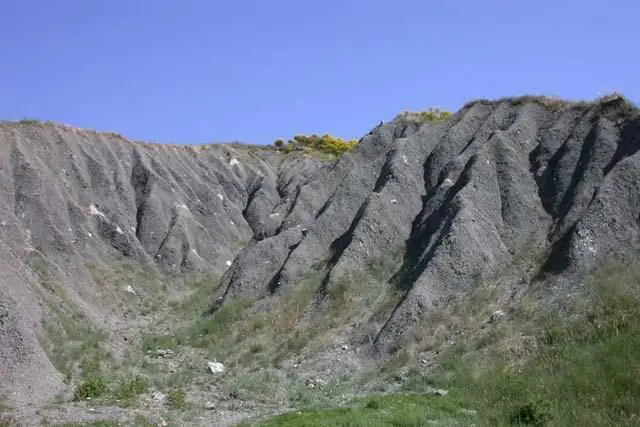
Clay sculptures
Gullies and the land. As a result, they are over most of the Emilia Romagna region in the North of Italy. They form mainly in the southeast or southwest, between 200 and 400 meters in altitude. Along the first reliefs of the Emilia Romagna Apennine ridge, the gullies are a very frequent geomorphologic formation. In fact, they are the dominant feature of the landscape. We see it dazzling, arid, and bare in the summer. As well as gloomy on winter when the clays are wet through. While the scenery of the gullies amphitheaters revives in the spring when the yellow of the broom plants stands out on the gray of the eroded rock. But also the emerald green of the scattered gramineous on the less steep portions.
The landscape of the gully
Most often, to get to the edge of a gully it takes some time walking. The forested strip or the prairies frame the landscape that we see. So as by shrubs or cultivated fields. Nowadays, almost everywhere, the medieval tracks of the ridge have become faint traces of a collapsed path or muddy headlands. In addition, of the old country houses and the parishes, we find often just heaps of stones.
The extraneous world
Hence, now, the gullies landscape are as forgotten places, in a desolate and disturbing abandonment. As a result, an inaccessible and extraneous world. Perhaps this is why it gives you stronger and more surprising sensations, much it is closer to the cities. As well as to the artisan areas, and to the busy Via Emilia.
The shape of a gully
The gullies are like a drainage basin in miniature. In fact, they are the result of a phenomenon with intense superficial erosion. Operated by rains runoff on a stratification of clay, the so called scaly clays. And also the presence of calcareous and other rocks characterize them. As a result, discontinuous stripes appear, with gray, white, black, purple, red and green tones. With bizarre shapes, bent and wrap up like strings or ribbons. As well as sometimes stretched in multicolored alignments.
The geologic story
On the clay, the erosion goes much faster than the other rocks. As a result, it favors a continuous and rapid retreat upstream of the valleys. For sure, due to a self strengthening and regressive mechanism. However, to strengthen the formation of the gullies, from the Romans domain, the deforestation, the agriculture, and the farming practices also contributed. But this situation ended no more than a few decades ago. In conclusion, the gullies are now so great, because they tell a fascinating geologic story.

